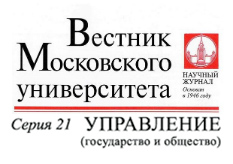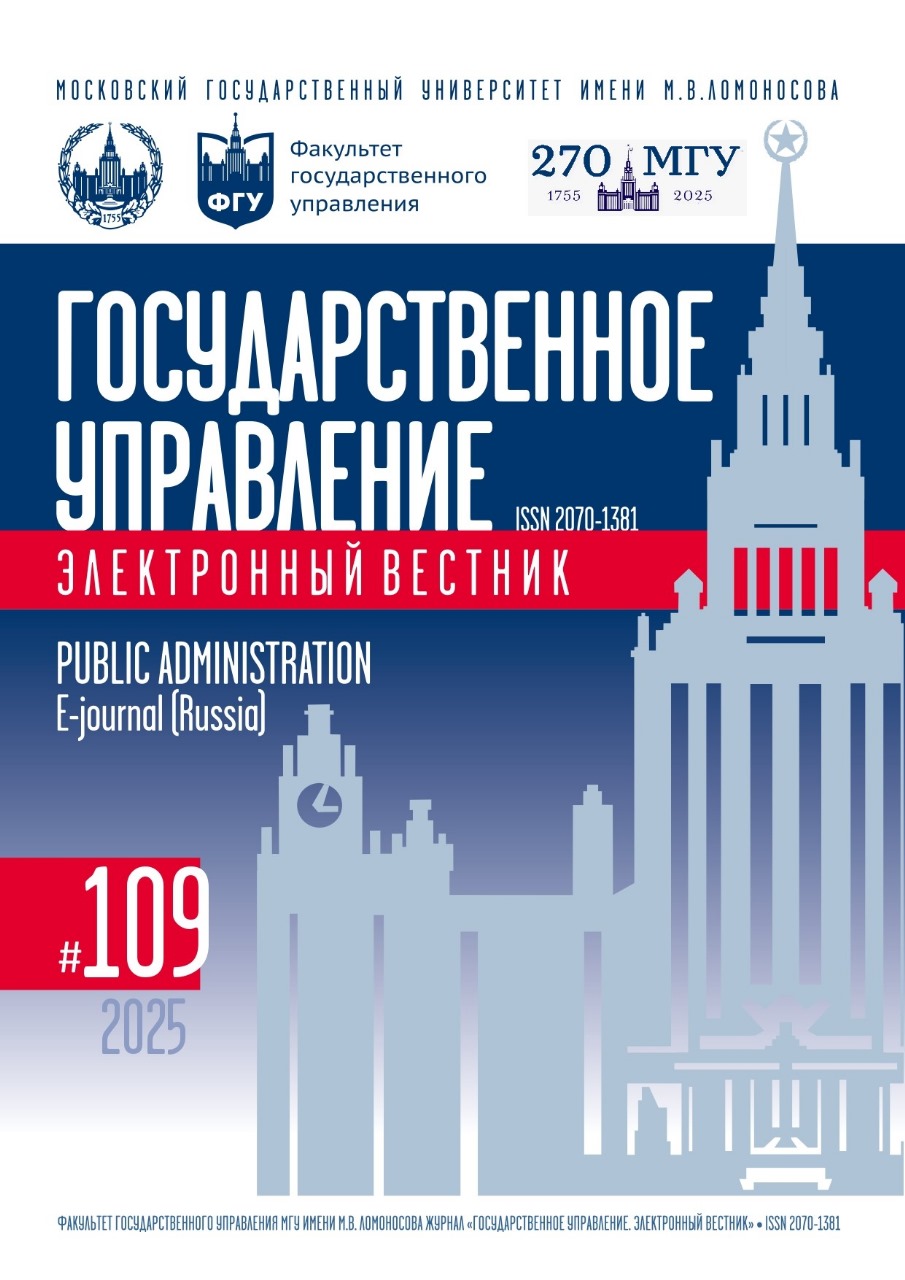Dynamics of Labour Productivity of Medical Personnel in the Russian Federation Health Care
DOI:
https://doi.org/10.55959/MSU2070-1381-109-2025-146-156Keywords:
Labour productivity, number of doctors, number of visits, labour productivity forecast, economics of medical labour.Abstract
The present study touches upon one of the debatable problems in health economics — the labour productivity of medical staff. Despite the existing palette of opinions on approaches to its measurement, there is no doubt about the value of this method in assessing the efficiency of personnel performance in any sphere of activity. The medical industry in this sense is not an exception. The authors’ appeal to this area of scientific research is defined by the special attention of public authorities of all levels to the issue of increasing labour productivity in the economy of our country. Its solution involves the current assessment and monitoring of this indicator. Total transition to market relations of all sectors, including helping industries has only aggravated this problem. At the time of writing this study among domestic publications there is a shortage of works in which it is possible to find a reflection of long-term dynamics and forecast of labour productivity of medical personnel of domestic health care. The aim of the study is to analyze the dynamics and forecast labour productivity of medical staff in Russian healthcare. To make a 5-year forecast, the authors applied the method of time series analysis and cross-platform econometric analysis software Gretl. As a result of the present study, it is proved that from 2011 to 2022 the productivity of doctors decreased by 3.7% or in absolute terms by 74 (number of visits per 1 doctor), the number of doctors increased insignificantly by 0.3% (2216 people), and the attendance of medical organizations decreased by 2.1% (31821.2 people). On average, physician productivity decreased by 0.3% each year, the number of physicians increased by 0.1% each year, and attendance decreased by 0.2%. A significant decline was observed during the SARS-CoV-2 pandemic. The 5-year forecast of this indicator obtained in this study illustrates a possible positive trend of this indicator, symbolizing the restoration of stable operation of health care facilities after the difficult period of the SARS-CoV-2 pandemic.
References
Кашерининов Ю.Р. Особенности проведения экспертизы качества медицинской помощи в условиях многопрофильного федерального центра // Артериальная гипертензия. 2009. Т. 15. № 2. С. 170–180. DOI: 10.18705/1607-419X-2009-15-2-170-180
Макин А.А. Технологии управленческой деятельности, направленные на повышение доступности и качества оказания медицинской помощи в медицинской организации (на примере БУЗ РА «Кош-агачская РБ») // Ученые записки Алтайского филиала Российской академии народного хозяйства и государственной службы при Президенте Российской Федерации. 2017. № 14. С. 81–94.
Мамонов Е. Повышаем производительность труда // Кадровая служба и управление персоналом предприятия. 2015. № 11. С. 78–86.
Погорельцева О.А., Хатькова С.Е., Беденко Н.Н. Концепция управления медицинским персоналом в условиях неопределенности // Вестник Тверского государственного университета. Серия: Экономика и управление. 2024. № 2(66). С. 144–161. DOI: 10.26456/2219-1453/2024.2.144-161
Попсуйко А.Н., Артамонова Г.В. Особенности измерения производительности труда в медицинских организациях (на примере Кемеровской области — Кузбасса) // Вестник Кемеровского государственного университета. Серия: Политические, социологические и экономические науки. 2023. Т. 8. № 4. С. 469–477. DOI: 10.21603/2500-3372-2023-8-4-469-477
Узякова Е.С. Производительность труда и возможности роста экономики // ЭКО. 2020. № 6(552). С. 87–110. DOI: 10.30680/ECO0131-7652-2020-6-87-110
Adugna M., Dinsa G., Khuzwayo N. Can Performance-Based Financing Improve Efficiency of Health Centers in Ethiopia? A Malmquist Productivity Index Analysis // BMC Health Services Research. 2024. Vol. 24. DOI: 10.1186/s12913-024-11127-4
Butala N.M., Hidrue M.K., Swersey A.J., Singh J.P., Weilburg J.B., Ferris T.G., Armstrong K.A., Wasfy J.H. Measuring Individual Physician Clinical Productivity in an Era of Consolidated Group Practices // Healthcare. 2019. Vol. 7. Is. 4. DOI: 10.1016/j.hjdsi.2019.02.001
Chai P., Zhang Y., Zhou M., Liu S., Kinfu Y. Health System Productivity in China: A Comparison of Pre- and Post-2009 Healthcare Reform // Health Policy Plan. 2020. Vol. 35. Is. 3. P. 257–266. DOI: 10.1093/heapol/czz157
Erus B., Hatipoglu O. Physician Payment Schemes and Physician Productivity: Analysis of Turkish Healthcare Reforms // Health Policy. 2017. Vol. 121. Is. 5. P. 553–557. DOI: 10.1016/j.healthpol.2017.02.012
Johannessen K.A., Kittelsen S.A., Hagen T.P. Assessing Physician Productivity Following Norwegian Hospital Reform: A Panel and Data Envelopment Analysis // Social Science & Medicine. 2017. Vol. 175. P. 117–126. DOI: 10.1016/j.socscimed.2017.01.008
Kim Y., Lee K.H., Choi S.W. Multifaced Evidence of Hospital Performance in Pennsylvania // Healthcare (Basel). 2021. Vol. 9. Is. 6. DOI: 10.3390/healthcare9060670
Menon V., Agrawal V., Joshi Sh., Ghosh A.K. Physician Burnout: Quo vadimus? // Indian Journal of Medical Sciences.2020. Vol. 72. Is. 3. P. 211–216. DOI: 10.25259/IJMS_23_2020
Pourmahmoud J., Bagheri N. Uncertain Malmquist Productivity Index: An Application to Evaluate Healthcare Systems during COVID-19 Pandemic // Socio-Economic Planning Sciences. 2023. Vol. 87. Part A. DOI: 10.1016/j.seps.2023.101522
Yaghoubi M., Salimi M., Meskarpour-Amiri M. Systematic Review of Productivity Loss Among Healthcare Workers due to Covid-19 // International Journal of Health Planning and Management. 2022. Vol. 37. Is. 1. P. 94–111. DOI: 10.1002/hpm.3351
Downloads
Published
Similar Articles
- Natalia P. Ivashchenko, Alexandra A. Engovatova, Innovations for Labour Market: International Experience in Building National Competency (Skilling) Systems , Public Administration. E-journal (Russia): No. 106 (2024)
- Elena S. Palkina, Yuri V. Kangur, Features of Determining and Analysing Labour Intensity and Labour Productivity in Ship Designing , Public Administration. E-journal (Russia): No. 87 (2021)
- Lydia S. Leontieva, Svetlana V. Avilkina, The Higher Education System as a Strategic Resource for Regional Development , Public Administration. E-journal (Russia): No. 86 (2021)
- Vladimir S. Osipov, Michael N. Tolmachev, Alexander P. Tsypin, Assessment of COVID Crisis Impact on the Unemployment Rate in Post-Soviet Countries , Public Administration. E-journal (Russia): No. 96 (2023)
- Valeriya E. Gavrilova, Population Health as a Nationally Significant Resource in the Context of Expensive Money , Public Administration. E-journal (Russia): No. 111 (2025)
- Irina V. Berezinets, Alla Z. Bobyleva, Julia B. Ilina, Probability of Bankruptcy: Are the Forecasting Models Reliable? , Public Administration. E-journal (Russia): No. 94 (2022)
- Elena N. Veduta, Liparit A. Gegamyan, Artificial Intelligence in Ensuring Sustainable Economic Development , Public Administration. E-journal (Russia): No. 110 (2025)
- Marianna V. Kudina, Azret Sh. Kasymov, Venture Capital and Creative Labour: Dilemma of Economic Growth Model Selection , Public Administration. E-journal (Russia): No. 85 (2021)
- Varvara Yu. Kulkova, Non-Profit Organizations in Provision of Healthcare Services at State and Regional Levels , Public Administration. E-journal (Russia): No. 95 (2022)
- Elmira Sh. Shaimieva, Guzel I. Gumerova, Aleksandra J. Butneva, S. Hüsig, G. Schewe, Intellectual Property as a Driver for International Scientific Cooperation: Development of Indicators for Russian Practice , Public Administration. E-journal (Russia): No. 88 (2021)
You may also start an advanced similarity search for this article.




